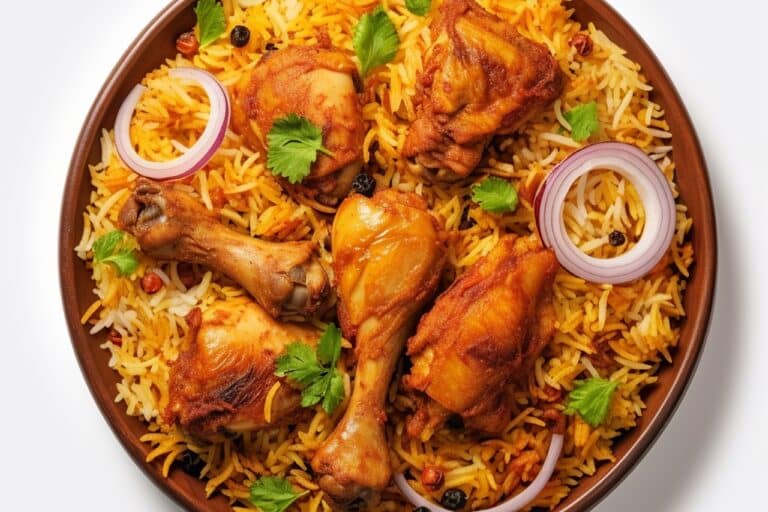Like any nation with a proud culinary tradition, Pakistani cuisine is about far more than just food. It’s a way of life deeply rooted in the country’s communities and customs, where meals mean shared memories and values.
Eating in Pakistan is a unique gastronomic experience. The distinctive cuisine features a broad array of spices often associated with neighboring India, the singular flavor of tamarind, and Persian delicacies like pistachios and dried fruits.
From Islamabad to Karachi, food lies at the heart of Pakistani culture. So whether you’ve moved away and are feeling nostalgic for Nihari, or you’re looking forward to a culinary adventure as a tourist, read on to enjoy the latest in this Remitly series celebrating national dishes around the world.
Biryani
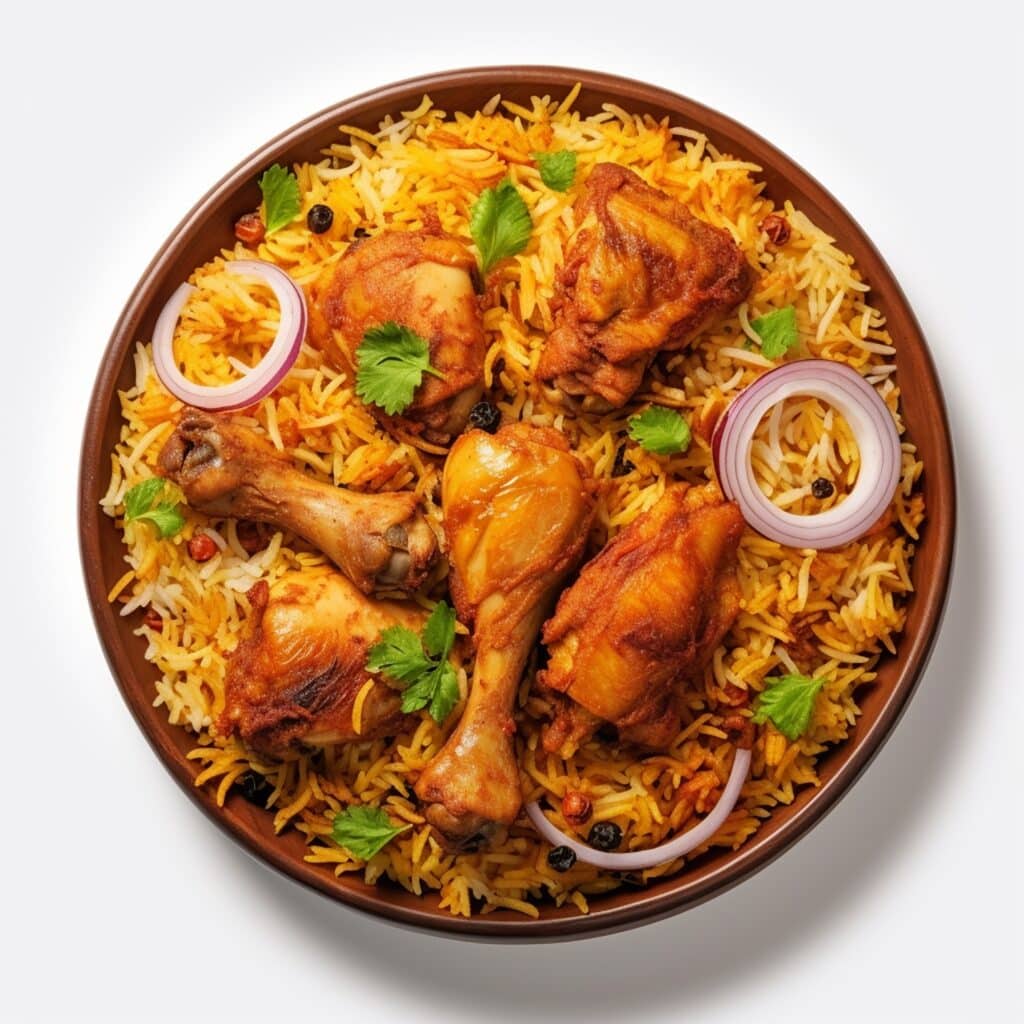
Biryani is a quintessential rice dish in Pakistani cuisine. It consists of aromatic basmati rice and spiced meat, typically chicken or mutton.
The dish is flavored with a rich blend of spices, including cardamom, cumin and garam masala, and is often garnished with loads of coriander.
The term “Biryani” comes from the Persian word “birian,” which means “fried before cooking.” It reflects the traditional method of preparing this rice dish. Why not try it yourself with this authentic biryani recipe?
Nihari

Nihari is an indulgent, slow-cooked stew, featuring shank meat and seasoned with spices like garam masala, red chili powder, and turmeric.
Often enjoyed as a hearty breakfast, especially during Ramadan, Nihari has deep cultural roots in both Lahore and Karachi.
Its name is derived from the Arabic word “Nahar,” which means “morning,” given that it is traditionally consumed at dawn. This Nihari recipe is a real winner for beginners.
Haleem
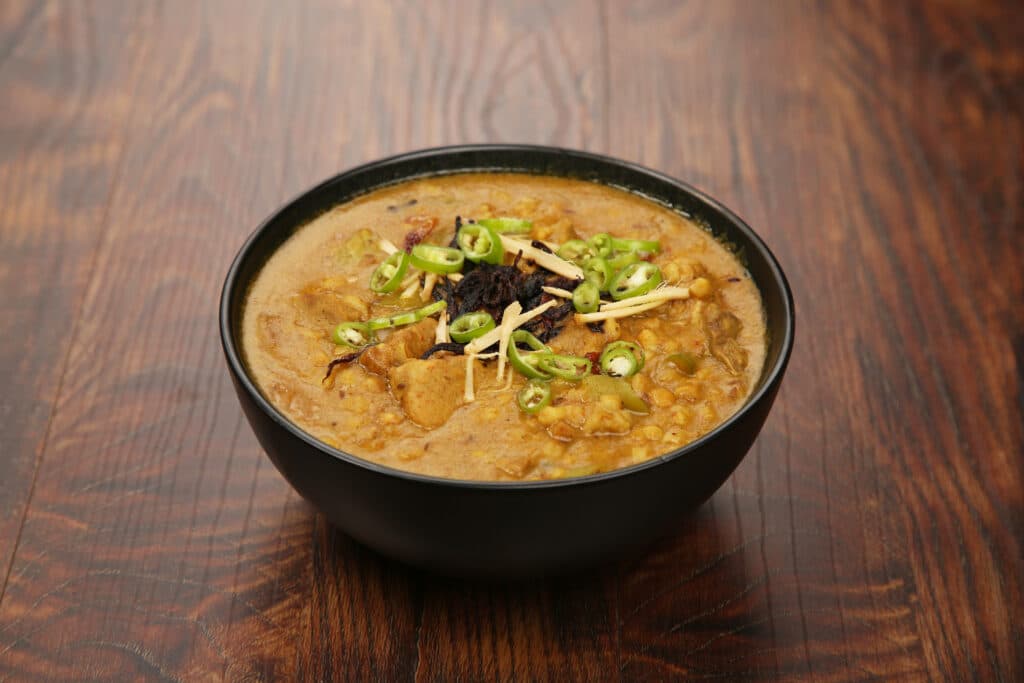
Haleem is a nutritious blend of wheat, barley, lentils, and meat, slow-cooked with spices such as cumin and turmeric.
The word “haleem” comes from the Arabic “hulm” which means “patience,” a nod to the long cooking process involved.
Its thick, porridge-like consistency makes haleem a rich and filling meal, which is why it’s so popular during Ramadan and Eid.
Chapli Kebab
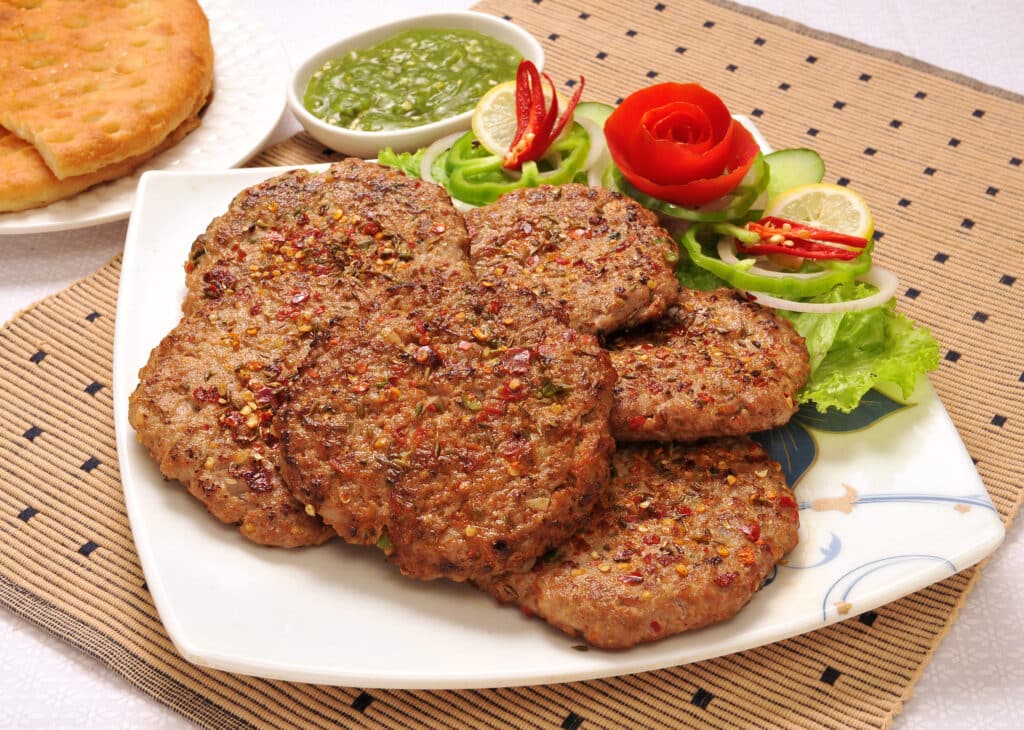
A chapli kebab, or shami kabab, is a popular Peshawari street food made from minced meat mixed with spices, green chili, coriander, and pomegranate seeds.
The patties are then fried in ghee, which gives them their distinctive crispy texture. This chapli kebab recipe is an absolute flavor bomb.
“Chapli” is derived from “chaprikh,” a Pashto word meaning “flat” that describes the kebab’s shape.
Chicken Karahi

Karahi is a popular Pakistani dish and one of my personal favorite takeout options.
It’s served with a hefty portion of keema naan and is named after the wok-like pan typically used to prepare it.
Like most meat dishes in Pakistani cuisine, it’s made with chicken or mutton and slow-cooked with tomatoes, green chilies, ginger, garlic, and a variety of spices.
Craving takeout without the guilt? Check out this top Karahi recipe.
Korma
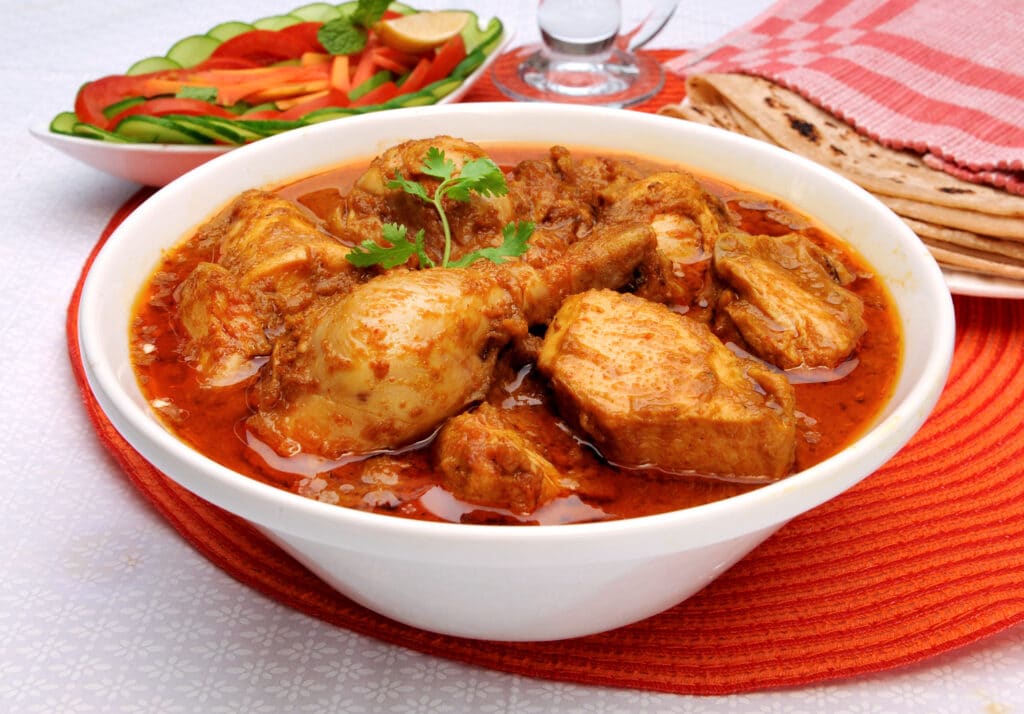
Korma is a mainstay on Western takeout menus. The name comes from the Urdu word “qorma,” which means “braise.”
A favorite in Pakistani and Mughal cuisine, Korma is a classic, luxurious curry made with yogurt, ground nuts, and spices like turmeric, cumin, and garam masala. It is often served during weddings and on other special occasions.
Saag Paneer
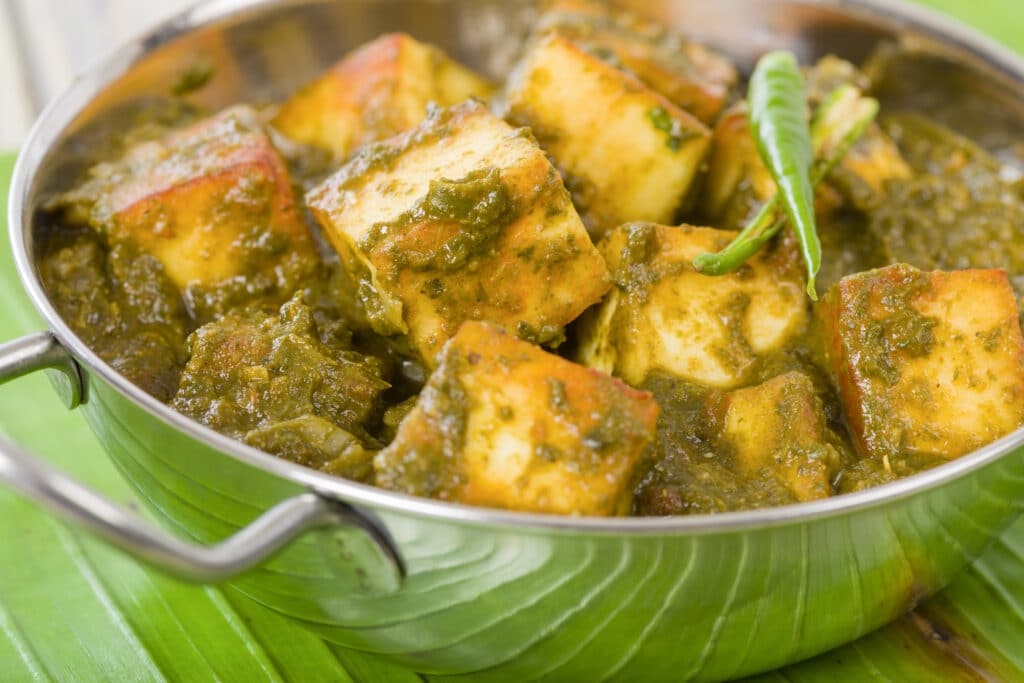
Saag, or Palak, Paneer is a vegetarian dish made with paneer (Indian cottage cheese) and spinach (palak). It is also seasoned with cumin, turmeric, and garam masala.
Light, fresh, and healthy, this is a great weeknight dinner recipe. In my opinion, the beautifully creamy sauce is best soaked up with a piece of roti or puri.
Daal
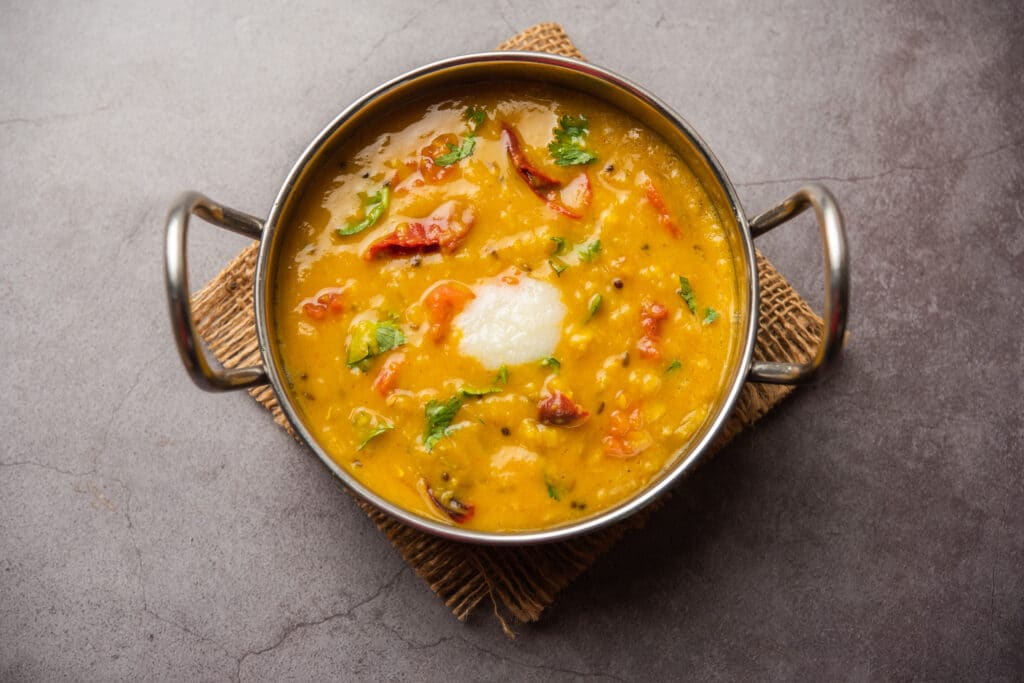
The word “Daal” simply means lentils in Urdu and Hindi, highlighting the dish’s main component.
A staple in Pakistani food, daal is a flavorful meal made by simmering lentils with onions, tomatoes, garlic, and a variety of spices. Served with roti or pulao rice, it’s a nutritious and comforting feast enjoyed daily across the country.
Seekh Kebabs
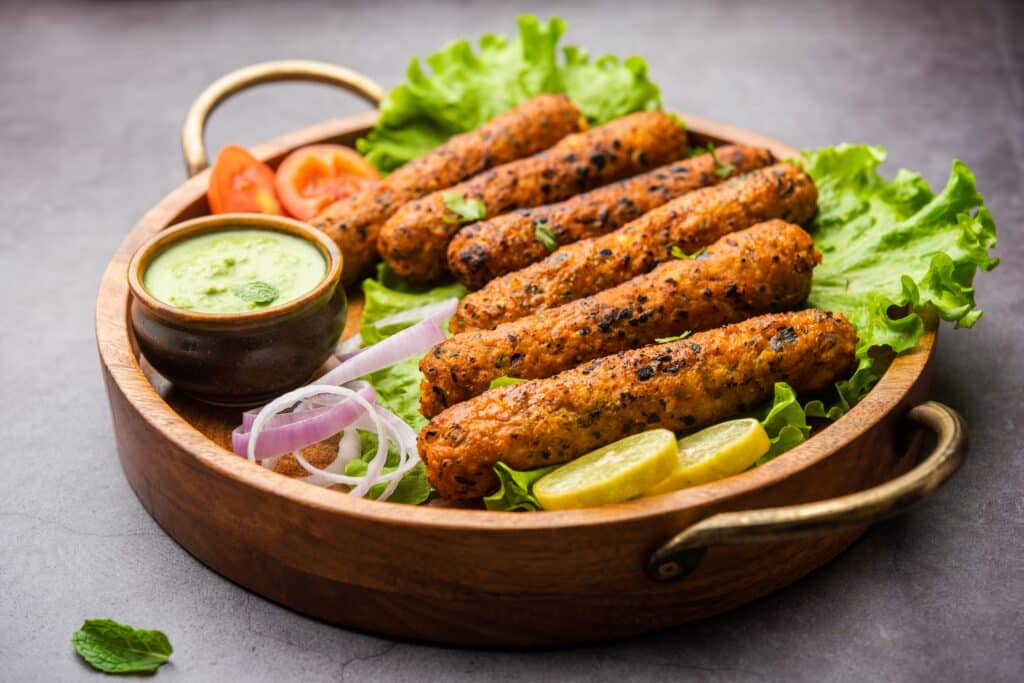 Seekh Kebabs are made from skewered minced meat, usually beef or lamb, mixed with spices such as garam masala, cumin, and coriander.
Seekh Kebabs are made from skewered minced meat, usually beef or lamb, mixed with spices such as garam masala, cumin, and coriander.
They are then charred over an open flame to smoky perfection. “Seekh” simply refers to the skewers used in grilling the kebabs and this recipe is sure to be a hit during BBQ season.
This dish is a favorite in Kashmiri cuisine. It’s often enjoyed as street food or at family gatherings, and it’s perfect when served with a cool, fresh helping of raita.
Lassi
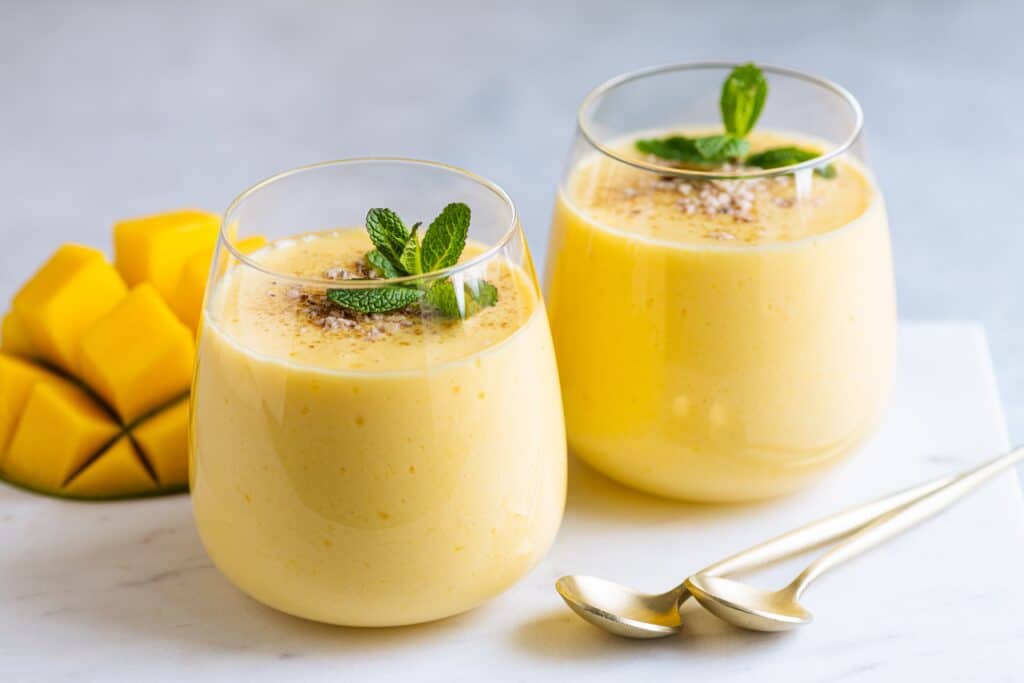
The name “Lassi” comes from the Punjabi word for buttermilk, a key ingredient in its traditional preparation.
The only sweet entry on this list, lassi is a refreshing yogurt-based drink blended with water, salt, or sugar and flavored with fruits or spices. It’s a popular summer beverage, especially in Punjab, providing cooling relief from the heat.
Check out this recipe for my favorite version, the mango lassi.
More food from Pakistan
It’s impossible to limit Pakistan’s incredible culinary culture to just ten dishes. So, here are some other awesome Pakistani recipes that you just have to try:
- Suji Ka Halwa is a syrupy semolina pudding eaten for breakfast or dessert.
- Aloo Gosht, a rich, comforting meat and potato curry made with tender pieces of mutton or beef.
- Chana Masala, a savory curry with a spiced chickpea and tomato base.
- Aloo Paratha – a breakfast flatbread stuffed with a spicy potato filling and served with chutney.
- Chaat is a family of snacks named after the spice mix used to make them, typically served from food carts across the region.
- Pakora are tasty veggie fritters served by street food vendors made with spiced onions, potatoes, and gram flour.
- Samosas are another moreish fried side dish consisting of a savory filling wrapped in a crispy pastry parcel.
Exploring Pakistani cuisine in the U.S. and Europe
Pakistani cuisine’s rich and interesting flavors have made it popular among diners around the world.
Tandoori is often more associated with Indian food, but the takeout favorite in both the U.S. and the U.K. is common in Pakistan, too. In fact, the famous chicken tikka masala was invented in Great Britain by chefs from all over South Asia.
In the U.S., cities like New York, Houston, and Chicago are home to thriving Pakistani communities. Y
ou can easily find authentic restaurants serving traditional fare there. London is also renowned for its top-class curry establishments. And, of course, if you head into almost any cafe in the Western world these days, you’ll see a chai latte near the top of the menu.
The story of Pakistan’s food
Pakistani food is a rich blend of regional and historical influences. Its location has seen it take the best of Persian, Central Asian, and Indian flavors and develop them over centuries of trade, migration, and empire.
The Mughal era introduced complex spices and techniques, and many cooks from the Bilad al-Sham region (modern-day Syria) migrated during the Middle Ages. Today, Pakistan’s food reflects its diverse cultural heritage.
More about Pakistan
At the time of writing, 1 USD is worth about 280 Pakistani Rupees. With a meal costing between 1500 and 2000 rupees, hungry travelers will have the chance to taste many of the amazing dishes in this list above for under ten dollars.
Also read: Discover the Recipe and Facts about Kebab: Turkey’s National Dish
What Are Some Traditional South African Dishes That Pair Well with Pakistani Cuisine?
Blending flavors from diverse cultures, south africa’s iconic dishes such as bobotie and bunny chow can beautifully complement traditional Pakistani cuisine. The spiced meat and fruity undertones of bobotie resonate well with the rich curries of Pakistan, creating a delightful fusion for adventurous palates eager for unique culinary experiences.
FAQs
Why is Pakistani cuisine famous?
Pakistani cuisine is famous for its rich, aromatic flavors, extensive use of spices, diverse dishes, and ability to blend various culinary traditions from different regions of the country.
What are some famous Pakistani dishes?
Famous Pakistani dishes include biryani (a spiced rice dish with meat), Nihari (a slow-cooked meat stew), haleem (a lentil and meat dish), chicken karahi (a spicy curry) and kebabs.
Is Pakistani food similar to Indian food?
Yes, Pakistani food is similar to Indian food due to shared history and cultural influences, but it has distinct flavors, regional variations, and a unique use of spices.
What to bring to a Pakistani dinner?
When attending a Pakistani dinner, it’s customary to bring a gift such as traditional desserts like Seviyan (a vermicelli pudding), kheer (a type of rice pudding), fresh fruit, or a bouquet of flowers as a token of appreciation.
